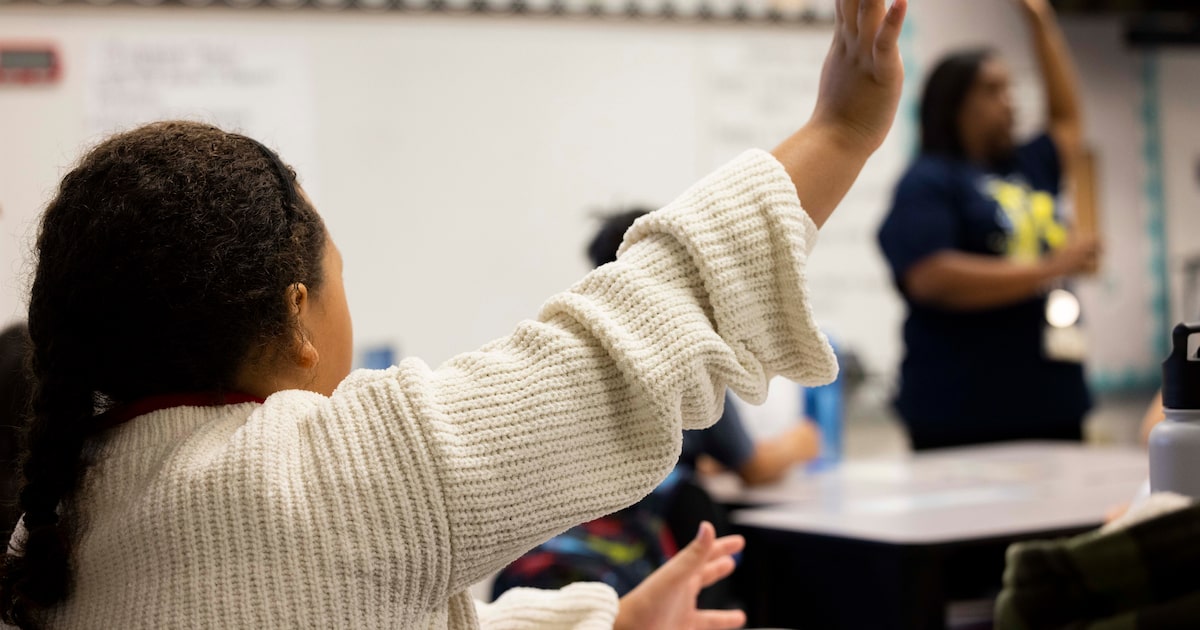Pay raises, smaller class sizes and facility upgrades are on the November ballot for more than a dozen North Texas districts.
District officials want voters to approve increased tax rates that would help keep high-quality educators at their campuses or school bond packages to pay for building improvements. Their appeals come as schools across the region are confronting tight budgets amid rising inflation.
“We don’t want to scale back,” said Garland ISD Superintendent Ricardo López. “You always could, and not give these kids opportunities. But then what we’re not doing is not investing in neighborhoods. And when those kids leave our schools, we can’t guarantee that they’re prepared for college, careers and life.”
Early voting starts Monday and runs through Oct. 31. Election Day is Nov. 4. Voters can find their polling location at county elections websites.
The Education Lab
Some financial relief came this year when lawmakers raised the base amount of money the Legislature allocates per student by $55, the first increase since 2019. In a historic funding measure, lawmakers funneled an additional $8.5 billion to public schools over the next two years. Around half of that will increase teacher pay through retention raises.
Related
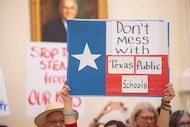
District officials say state money isn’t enough, and they need voter support to maintain schools.
If the state per-student money kept up with inflation, it would have increased $1,300 this session, area school officials say. Campuses across the region are contending with rising costs, aging infrastructure and underfunded state mandates, such as armed security officers at every campus. Some districts are bracing for an influx of students, while others are trying to make up for lost dollars due to enrollment declines.
Related
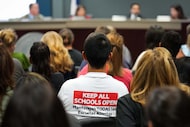
“The numbers just aren’t adding up for us to continue to do the things that we need to do,” said Joe Harrington, superintendent of Hurst-Euless-Bedford ISD.
Competition for students is also expected to ramp up with the 2026-27 school year rollout of Texas’ education savings accounts, public education leaders say.
“We want to create programs that allow our parents and our kids to have a feeling about Richardson ISD, that when that voucher hits their mailbox, they don’t even have to consider it,” said Superintendent Tabitha Branum. “We’re going to invest in your child and we’re going to set up your child to be life-ready. You don’t have to look anywhere else.”
Retaining teachers
Since the pandemic, schools across Texas have grappled with recruiting and retaining quality educators. The number of uncertified teachers has exploded and the rate of educators leaving the profession has crept up, according to state data.
Related
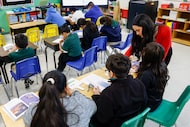
A proposed tax rate increase would help generate $56 million for Garland ISD, more than half of which would go toward pay raises to attract and retain educators, López said.
Neighboring districts have increased their starting teacher salary, while Garland ISD, which is facing a $60 million shortfall, is below the market average at $61,500, according to its website.
Garland ISD’s tax rate sits at $1.05 per $100 of assessed property value. If approved by voters, the new tax rate would be $1.17.
The average monthly impact on a $400,000 home would be an additional $3.77 per month, based on the proposed increase in the homestead exemption lawmakers passed this year, according to the district’s website. Voters statewide must approve the proposed amendment for the increase to take effect.
Related
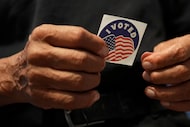
Some experienced educators in Texas received salary bumps this fall after lawmakers acknowledged they needed to fix the teacher pipeline.
Teachers with three or four years of experience in school districts with more than 5,000 students saw their pay jump $2,500, while teachers with five or more years of experience saw their pay increase $5,000.
While the legislation sets aside a fraction of state funds for districts to use to retain support staff and new teachers, it’s not enough to provide similar raises, López said.
The new tax rate would allow Garland ISD to provide pay bumps to the remaining 4,500 staff, such as bus drivers, librarians or counselors, and teachers who didn’t receive the targeted increases.
“In addition, other districts were able to give a raise on top of [the state’s pay increases],” López said. “If we don’t get this money, we can’t give the raise on top of that like the teachers deserve.”
Carroll ISD’s proposed tax rate election would generate $4 million annually, allowing the district to preserve student programs and offer raises across the board.
If voters approve the new tax rate, every staff member would receive a $1,000 retention stipend in November and a $1,000 stipend in April, district officials said.
The district’s proposed tax rate, which would help offset a projected shortfall, would be about $0.93 per $100 of assessed property value. It would make it the lowest total tax rate in the district’s history, as trustees lowered the interest and sinking rate, or the portion of the district’s rate that pays for capital projects, according to the district’s website.
Hurst-Euless-Bedford ISD, which is facing a $20 million shortfall, is asking voters to approve a new tax rate that would funnel $12 million into the district.
Much of the revenue will go toward maintaining competitive pay, which keeps teachers in the district and ensures class sizes remain small as the district’s enrollment grows, said Harrington. Without the money, school officials could consider making staff and program cuts.
“We’ve waited. There’s not many districts left that haven’t gone out for a VATRE (voter-approval tax rate election). We’ve kept the tax rate down as long as we could,” Harrington said. “It’s just at this point, we can’t wait any longer.”
The district’s new tax rate would be around $1.03 per $100 of assessed property value, up from $0.97. The average homeowner would see a decrease in their property tax bill, due to recent cuts to the district’s property tax rate and the proposed increase in the homestead exemption, according to the district’s website.
Smaller class sizes
In Northwest ISD, school officials are asking voters to pass a 3-cent tax rate increase that would generate $12 million. A majority of that revenue would go toward hiring back educators after staff reductions led to increased class sizes this year.
Voters rejected a 3-cent tax hike last November. Without that funding, the district faced a $16 million shortfall and school officials cut 100 teaching positions.
Those reductions mean core subjects, such as social studies, English and math, have more students per class, said Jonathan Pastusek, the district’s chief financial officer. Band and choir teachers are splitting their time at multiple campuses, forcing some schools to cut jazz bands or music theory classes. Without enough staffers, the district didn’t offer its second-grade water safety course to all students this year.
If voters approve the tax rate, district officials would add back staffing and bring back some eliminated programs. Class sizes would also decrease, though it wouldn’t return to normal levels.
“There’s not enough money to put it all back,” said Pastusek. “So our goal is to get halfway there.”
The district’s new tax rate would be around $1.08 per $100 of assessed property value. The average homeowner would see a decrease in their property tax bill, due to continued tax rate compression and the proposed increase in the homestead exemption, according to the district’s website.
New buildings
Richardson ISD is asking voters to fund $1.4 billion to pay for construction and renovations to aging buildings, stadium upgrades and new technology.
The average age of Richardson’s facilities is 58.8 years, Branum said.
“We are not a new, growing community. … What investments need to be made in our district so that it lasts another 58.8 years — that’s what this bond is all about,” she said.
Related
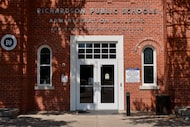
The package is split into three propositions, which voters can decide separately.
Proposition A will set aside $1.34 billion for construction projects, including transforming the remaining six junior high campuses into middle schools after the district transitioned to a middle school model in 2020.
It would also fund the district’s first career and technical education center, meaning more students could take programs like manufacturing, welding and plumbing. Such programs are offered at some, but not all, of Richardson’s high schools. It would also allow Richardson ISD to bring in-demand programs, such as automotive training or wastewater management.
“Trying to find the staff to teach and then to credential the students is very hard. To replicate that at all four high schools financially is just not feasible,” Branum said. “We also don’t have the real estate to replicate every program. Doing it centrally gives us economy of scale.”
Proposition B allocates $54 million to update technology devices in the district, while Proposition C will provide $7.4 million to the two largest stadiums in the district for various improvements.
Approval of the bonds will result in a tax rate increase of $0.04, equating to an annual increase of $124 for homeowners with an average market value home of $500,000.
Other bond proposals
In Van Alstyne ISD, district leaders are seeking voter approval for a $550 million bond package that would pay for new elementary schools, a new junior high, expansions of secondary schools and a new administration building. The fast-growing district is expected to exceed capacity in the next five years, according to its bond website. If it’s approved, voters will not see a change to the current tax rate.
Officials at Bland ISD, which is anticipating rapid enrollment growth, put forward a $9 million bond package. The bond will go toward safety and security updates, land acquisition to address future growth, roof replacements and HVAC updates, among other things. If it is approved, voters would see a 4-cent increase to the current tax rate.
Boyd ISD has a $63 million bond proposal on the ballot this November after it failed in May. The package would pay for a new intermediate school and infrastructure updates. If it’s approved, voters would see a 27.5-cent increase to the current tax rate.
Voters in Greenville ISD have a $399 million bond package to consider, which would fund a new high school, a new early childhood center, renovate classrooms and acquire land for future projects. The district is expected to exceed capacity next school year, according to its bond website. If it’s approved, voters would see a 16-cent increase to the current tax rate.
Midlothian ISD has a $389 million bond proposal on the ballot, which would help build a new elementary school and a larger career and technical education center, and upgrade technology devices. If it’s approved, voters will not see a change to the current tax rate.
Corsicana ISD is hoping voters approve a $205 million bond proposal. The funds would go toward a new early childhood center, a transportation building and an agricultural facility, among other renovations and expansions. Four of its campuses are already over capacity, according to the district’s website. If it’s approved, voters will see a 30.24-cent increase to the current tax rate.
Other tax rate elections
Rockwall ISD is hoping to tap voters for $16.5 million with a 4-cent tax rate increase. If approved, the district would set aside more than $10 million to keep pace with other area school districts on teacher and staff compensation. The rest of the money would go toward underfunded special education and safety requirements.
Denton ISD, which is facing a $15 million shortfall, has a 5-cent tax rate increase on the ballot, which would generate $26 million in revenue. If passed, the district would prioritize competitive salaries and raises for all teachers and staff by the 2026 school year. It would also bolster student programs, after more than 250 positions, including reading recovery and bilingual support specialists, were cut last year.
In addition to a bond election, Bland ISD is proposing an 8-cent tax rate hike that could generate $1.2 million. The tax increase will fund teacher and staff salaries and instructional costs.
The DMN Education Lab deepens the coverage and conversation about urgent education issues critical to the future of North Texas.
The DMN Education Lab is a community-funded journalism initiative, with support from Bobby and Lottye Lyle, Communities Foundation of Texas, The Dallas Foundation, Dallas Regional Chamber, Deedie Rose, Garrett and Cecilia Boone, Judy and Jim Gibbs, The Meadows Foundation, The Murrell Foundation, Ron and Phyllis Steinhart, Solutions Journalism Network, Southern Methodist University, Sydney Smith Hicks, and the University of Texas at Dallas. The Dallas Morning News retains full editorial control of the Education Lab’s journalism.

